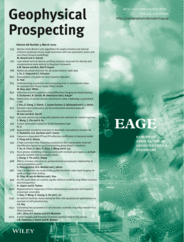
Full text loading...
 , Zhihui Zhu2
, Zhihui Zhu2 , Hanming Gu1
, Hanming Gu1
Based on the fact that the Hankel matrix representing clean seismic data is low rank, low‐rank approximation methods have been widely utilized for removing noise from seismic data. A common strategy for real seismic data is to perform the low‐rank approximations for small local windows where the events can be approximately viewed as linear. This raises a fundamental question of selecting an optimal rank that best captures the number of events for each local window. Gavish and Donoho proposed a method to select the rank when the noise is independent and identically distributed. Gaussian matrix by analysing the statistical performance of the singular values of the Gaussian matrices. However, such statistical performance is not available for noisy Hankel matrices. In this paper, we adopt the same strategy and propose a rule that computes the number of singular values exceed the median singular value by a multiplicative factor. We suggest a multiplicative factor of 3 based on simulations which mimic the theories underlying Gavish and Donoho in the independent and identically distributed Gaussian setting. The proposed optimal rank selection rule can be incorporated into the classical low‐rank approximation method and many other recently developed methods such as those by shrinking the singular values. The low‐rank approximation methods with optimally selected rank rule can automatically suppress most of the noise while preserving the main features of the seismic data in each window. Experiments on both synthetic and field seismic data demonstrate the superior performance of the proposed rank selection rule for seismic data denoising.

Article metrics loading...

Full text loading...
References


Data & Media loading...

